I love vindaye and it has taken me years to perfect this Mauritian Fish Vindaye recipe. When I first moved to the United States, I wanted to recreate my grandma’s recipe. I followed a few vindaye recipes online but they did not come close to my grandma’s incredible vindaye. When I was little, my family used to have a small grocer shop called la boutique Ah Ko, and Grandma used to sell her fish vindaye there. It was a very popular item amongst the regulars and she would sell out all the time. I asked her for her vindaye recipe over the phone and in typical Mauritian fashion, she would say add a bit of this and a bit of that without real measurements. I knew that the next time I visited Mauritius, I needed to see her in action and take a lot of notes so that’s exactly what I did.
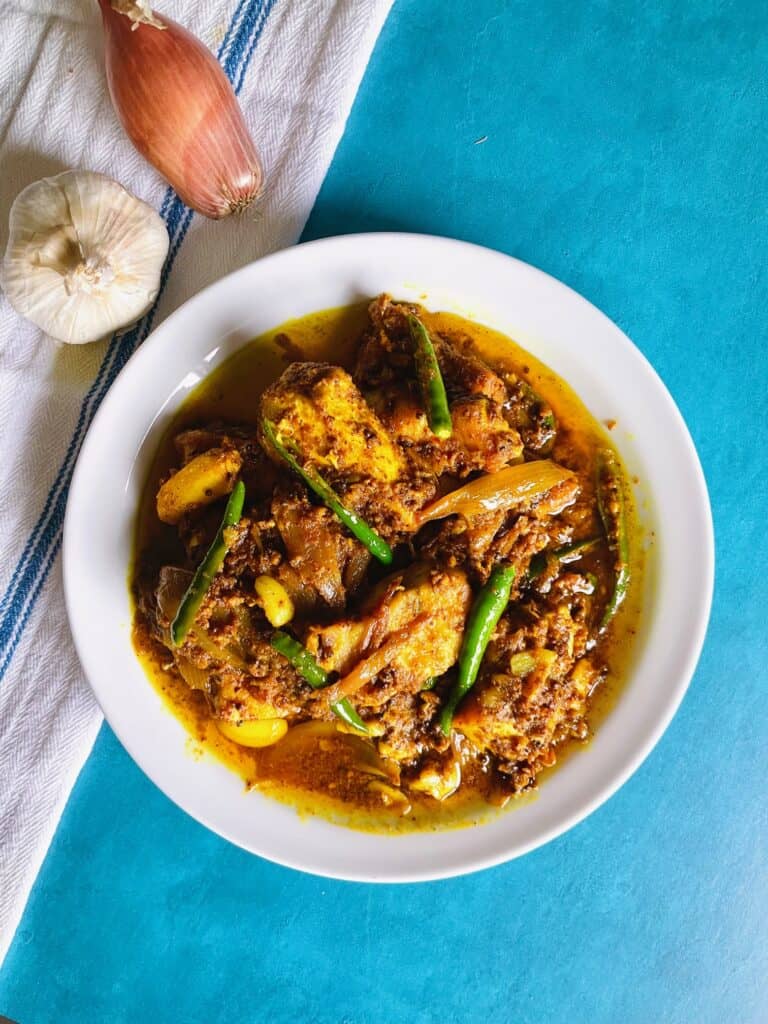
This is her vindaye recipe with minimal tweaks. I made it over and over throughout the years until I perfected the steps. It is called the Best Mauritian Fish Vindaye because, to my eyes, it is. I have tried many other vindaye renditions in Mauritius and I find them pale in comparison to my Grandma’s (but maybe I am being a little bit biased!)
This recipe calls for freshly ground achard masala paste using whole spices. That, and the generous addition of garlic cloves and shallots, results in loads of sauce to soak your baguette with. You want to use a firm flesh fish like tuna or swordfish (espadron in French) to make our Mauritian fish vindaye but you can also use a sturdy flaky fish like sea bass, halibut or cod.
Jump to:
What is Mauritian vindaye?
Mauritian Fish Vindaye, or vindaye poisson, is technically a pickle: a spicy mustardy delicious pickle that is! It bears a lot of resemblance to our vegetable achard, and in fact, you use the same base spices to prepare them. Think of vindaye as an achard but using fish or other types of animal protein as its main ingredient.
The most common type of vindaye is fish, but it is also often prepared with octopus, beef or even chicken. If you simply say vindaye, most people will think of fish. The dish is even tastier after a day or two as all the flavors will have perfectly macerated the fish resulting in an irresistible vindaye.
What does vindaye taste like?
If you have never tasted it, you might find it unappealing to imagine a spicy meat pickle but do not discount it until you have tried it for yourself. Having said that, it could still be a bit of an acquired taste. Not because of the meat, but more likely because this dish contains a fair amount of vinegar, mustard seeds along with some turmeric. So if you were not brought up eating spice-focused meals, it might feel too spice-forward, especially because of the mustard seeds, which can be a bit pungent.
It could be perceived as too mustardy, bitter or sour but if it is made right and balanced properly, a vindaye could become your next crave-worthy meal. It certainly is in my home! In fact, it is my husband’s favorite Mauritian dish. He tried it during his first visit to Mauritius and has been smitten with it ever since. My solution is to make it often.
Its journey to Mauritius
Is Vindaye from Portugal, Goa or Pondicherry?
Throughout the years, I have done a lot of research on the origin of this dish (it has become a bit of an obsession) and I have concluded that its root is undeniably Portuguese. In Portugal, it is called vino d’alhos, where vino refers to wine and alhos to garlic. It made its way to India, where it is called vindaloo, and from India to Mauritius.
THE GOAN VINDALOO (VINDALHO)
Indian vindaloo, also called vindalho, is usually associated with the southwestern Indian state of Goa. Although pork vindaloo would be considered traditional, there are many different types of vindaloos across India, namely: beef, mutton, chicken, fish, shrimp and even tofu.
THE PONDICHERRY VINDAIL (VIN D’AIL)
I strongly believe that our version of vindaye comes from the French-influenced southeastern city of Pondicherry where there is a dish called vindail and is pronounced the same as our vindaye, but spelled slightly differently. Part of the Indo-Mauritian makeup has its origin in Pondicherry so it stands to reason that they brought their vindail recipe with them.
Vindaye was originally called vine d’ail, where vine is a derivative of vin, vin meaning wine in French, and ail meaning garlic! Words and names have a way of getting boiled down in Créole, so vine d’ail turned into vindaye. The vindaye does not have much in common with the Portuguese vino d’alho or even the Goan vindaloo despite similarities in the preparation of the dishes. It does, however, bear a lot of similarities to the Pondicherrian version. And although vin means wine, there is no wine in vindail (Pondicherry) or vindaye (Mauritius). Vinegar has replaced the wine.
Learn more about it
If you love food history, or are simply a bit curious, I invite you to watch the British Chef and Restaurateur Rick Stein’s India, a six-episodes mini series about finding the best curry throughout India. But it is a whole lot more than that.
Episode 2 of Rick Stein’s India: Mumbai and Pondicherry. In the Mumbai section, you will recognize little things here and there reminiscent of Mauritius, and even come across ingredients that you might think were unique to Mauritius. One of those ingredients is Bombay Duck, more commonly known as the stinky bomli! In the Pondicherry section, they briefly discuss the Pondicherry vindail. In it, Lourdes Tirouvanziam-Louis mentions its very loose connection to Goan’s vindaloo and goes over how the French influenced this dish and its pronunciation in Pondicherry.
She says: “This dish is called vindail. It’s a deformation of the French dish, vin d’ail. They have stuck it (these two words) together, call it “vindail”…It is very typical of Pondicherry, nowhere else you will get it… (The Goan vindaloo has) nothing to do with this.”
You can find Episode 2 of Rick Stein’s India on Amazon’s Prime Now and on Daily Motion. It is absolutely worth watching and I highly recommend it. If you cannot access the video, you can find the transcript here.
Ingredients, additions and swaps
Fish, Octopus or Beef
You can use fish, octopus or beef to make vindaye. The recipe included in this post uses swordfish. Tuna and swordfish are the fish of choice to make vindaye because they are firm and can hold up to the delicious pickling sauce. Cut the fish into small pieces before using. Alternatively, you can also use a flaky fish like sea bass and cut them in steaks with the bone in and skin-on rather than fillets.
Shallot and Garlic.
In my version of vindaye, I use a copious amount of shallot and garlic without overpowering the dish. I like to use a lot of both because they are at the base of creating some saucy goodness. In Mauritius, we use shallot more often than yellow onion, so I love using it to make vindaye.
Onion
It is extremely common to find onion in vindaye recipes. It does merit its own little mention here although I do not use it in my own recipe. You can use roughly chopped yellow onion instead of shallot, keeping the pieces in equal sizes so that they cook evenly. Add them to the pan right before you add the achard masala paste. You want them to stay crunchy so only cook them just for a few minutes, until they are slightly soft but not cooked through.
Green Chili Peppers
Long and slender Indian green chili peppers are normally used in vindaye, but those are hard to come by where I am. I just substitute the spicier Thai green chili peppers, also known as birds eye chili peppers. Either works well. If you do not like heat at all, you can use green bell pepper instead and omit the green chili peppers altogether.
Mustard Seeds
Brown or black mustard seeds are the ideal types for this recipe. Once they hit the pan, they lend an intense mustard flavor to the dish. Be careful not to burn the mustard seeds as they will turn bitter.
Mustard Oil
Mustard oil is not essential to a vindaye recipe but I personally feel like if it is not included, the vindaye does not taste as authentic. I consider it an essential component of my Best Mauritian Fish Vindaye recipe. I use a bit in the cooking part but I also like to top the vindaye with mustard oil after it is transferred into the jar. If you are in the US, you can find organic cold-pressed mustard oil from Pure Indian Foods.
CORN STARCH
You can use almost any type of starch in this recipe. I like to use corn or tapioca starch. But arrowroot powder works well too. Starches are not essential but I like to use them as they add a tiny bit of crunch to the fish.
My version
This vindaye poisson recipe is a take on my Grandma’s. As mentioned before, she makes the best vindaye. Mine honors hers but I like to add even more shallots, garlic and chili peppers, and double the amount of sauce. So it is not a huge difference by any means, just little tweaks. This version of fish vindaye also contains fenugreek seeds (methi) and dried fenugreek leaves (kasoori methi), which are already in the achard masala paste rather than in this recipe itself. They lend an extra dimension that makes this dish irresistible.
Continuing on the subject of sauce… Again this version has more sauce than the standard vindaye. Now, I am not saying it is better this way, but who would not want to soak up extra sauce with their baguette? Anyway, in general, the regular vindaye does not contain much sauce and in fact could be considered a dry curry despite being closer to a pickle. But you know, if you want to compare it to something familiar rather than a spicy meat pickle dish, a dry mustardy fish curry is what you could compare it to! You can eat it with rice but it is more commonly enjoyed with bread. I toast my baguette over open fire!
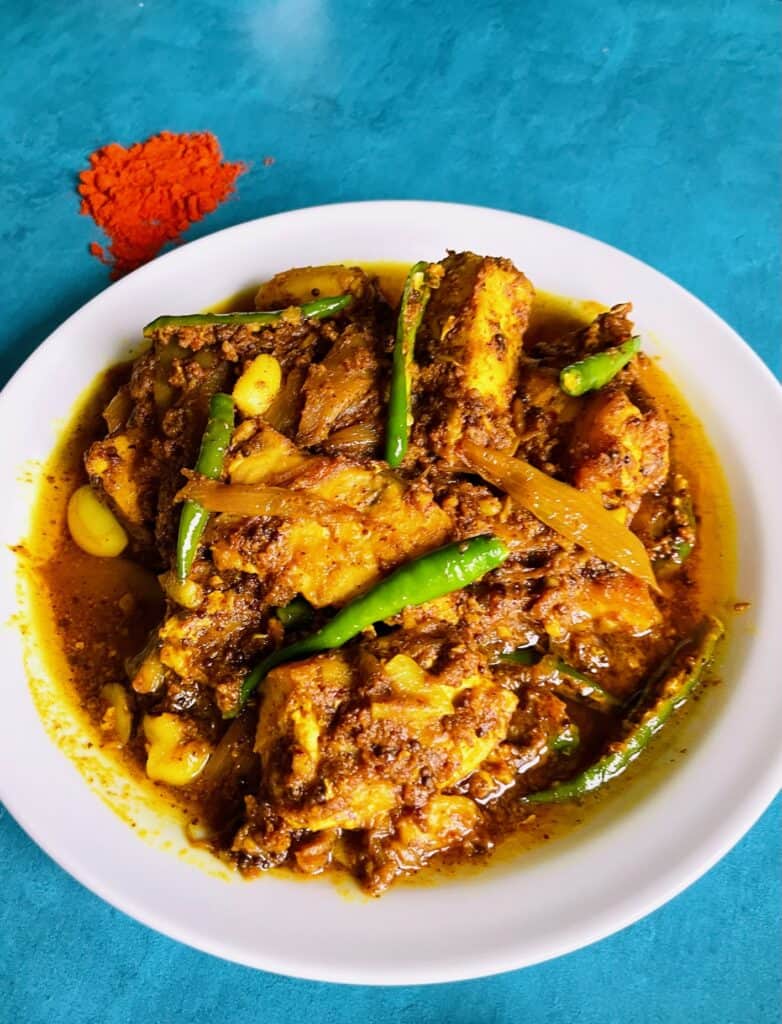
Reasons to love this recipe
- Easy to execute: Once you make it a couple of times, it is a very easy recipe to execute. Simply follow the steps and you will be on your way.
- Extra sauce: Vindayes are not normally saucy. This one is!
- Simple ingredients: You might have all the spices in your pantry already.
- It is a fish dish: If you are a little tired of eating chicken or meat dishes, you will find this vindaye poisson refreshing, especially if you love Indian flavors and are not in the mood for yet another curry.
- Keeps for a long time: As this is technically a pickle, it will keep in the fridge for weeks, but you might devour it much before that😊.
Recipe ingredients
You’ll need the following ingredients to make this Best Mauritian Fish Vindaye:
- Fish (swordfish pictured)
- Shallots
- Ginger
- Garlic
- Green chili peppers
- Mustard seeds
- Achard masala paste
- Corn starch
- White vinegar
- Vegetable oil
- Mustard oil
- Salt
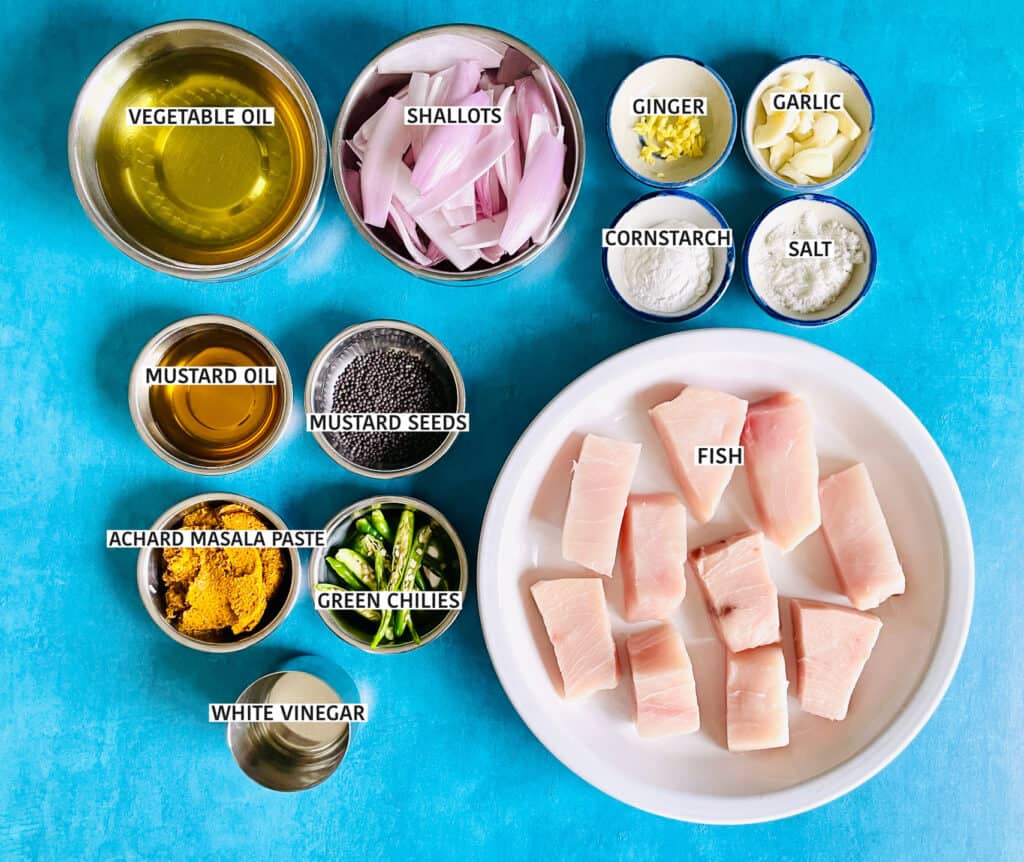
To make this recipe, first please refer to the Achard Masala Paste Recipe.
Tips and tricks
PREPPING AND COOKING THE FISH
- Pick the right fish
A sturdy and non flaky fish like tuna or swordfish are fit for a vindaye. For these, cut the fish into pieces rather than fish steaks. You can also use a thicker flaky fish that is sturdier, like sea bass, and cut them into steaks with the bone in and skin-on rather than fillets. I prefer swordfish to tuna because it is milder and can take on the vindaye sauce flavor really well.
These are the general rules. Depending on where you are in the world, find a fish that fits the bill. I do not recommend fish that is small and oily like sardines, or thin and flaky like trout. - Cut the fish in equal sizes
To ensure even cooking, cut the fish in pretty even sizes. I like to cut them into two-bite sizes.
- Remove excess moisture from the fish
When you fry the fish, hot oil will splash! There are not a lot of ways around it. However, you can minimize the degree to which it splashes and the extra steps are worth it. After you cut the fish, drain the fish juice, if present. There will be a good amount of liquid especially if you use previously frozen fish. Then place the fish on a few layers of paper towels. Do not skip this step! You might need to refresh the paper towels if the fish releases a lot of liquid.
I like to set the fish aside on the kitchen counter for about 15 minutes. You can sprinkle some salt on the fish at this point. The salt will not only season the fish, but also help release more liquid. Leaving the fish on the counter also gives the fish a chance to come to room temperature, which is better for cooking. - Sprinkle with tapioca starch
Right after all the liquid from the fish has been removed, you can sprinkle the fillets with tapioca starch (la poudre manioc). Make sure your oil is hot and ready to go before you add the tapioca starch, otherwise the starch will just soak into the fish instead of lightly coating it.
- Cook the fish until it is half-cooked
It is not essential to cook the fish only until it is half-cooked but I recommend it. Set the half-cooked fish aside while you cook the vindaye sauce. Then add half-cooked fish to the sauce, at which point the fish and the sauce continue cooking. This allows all the tasty spices to get absorbed into the fish.
To half-cook the fish, make sure all of its excess liquid has been absorbed into the paper towels. Heat a large pan on medium-high. Make sure the oil is hot before adding the fish otherwise the fish will release water and the fillets will not sear properly. You know the oil is hot when it starts shimmering. Once the oil is hot, add the fish and sear on one side. This takes about 3 minutes. Flip it over and cook for just 1 or 2 minutes. No need to sear this side. Set aside.
Below: Picture of half-cooked fish with seared side up.
Storage
Let the vindaye cool completely so it does not trap moisture. You can store it in a sterilized jar in the fridge for several weeks. Top it with vegetable oil if you want it to keep for longer.
Frequently Asked Questions
You will need a mortar and pestle and a high-powered blender, like Vitamix or Ninja, to make the achard masala paste used in this recipe but this recipe itself does not need any special equipment if you already have the paste ready.
Yes! It is quick, easy and to the point. It requires minimal preparation. Be sure to follow the recipe step by step to ensure the dish comes out perfect.
This recipe is medium spicy as it calls Thai chili peppers. If you would like to make a milder version you can use jalapenos or the long and slender Indian chili peppers. I have tried both with great results. You can also omit the green chili peppers altogether and use green bell peppers.
You can use almost any type of starch in this recipe. I like to use corn or tapioca starch. But arrowroot powder is also good substitute. You can also omit the starch if you do not have any.
A sturdy and non flaky fish like tuna or swordfish cut into pieces are fit for a vindaye. You can also use a thicker flaky fish that is sturdier, like sea bass, and cut them in steaks with the bone in and skin-on rather than fillets. I prefer swordfish to tuna because it is milder and can take on the vindaye sauce flavor really well.
These are the general rules. Depending where you are in the world, find a fish that would fit the bill. Fish that will generally not work well are small oily fish like sardines, or thin flaky fish like trout.
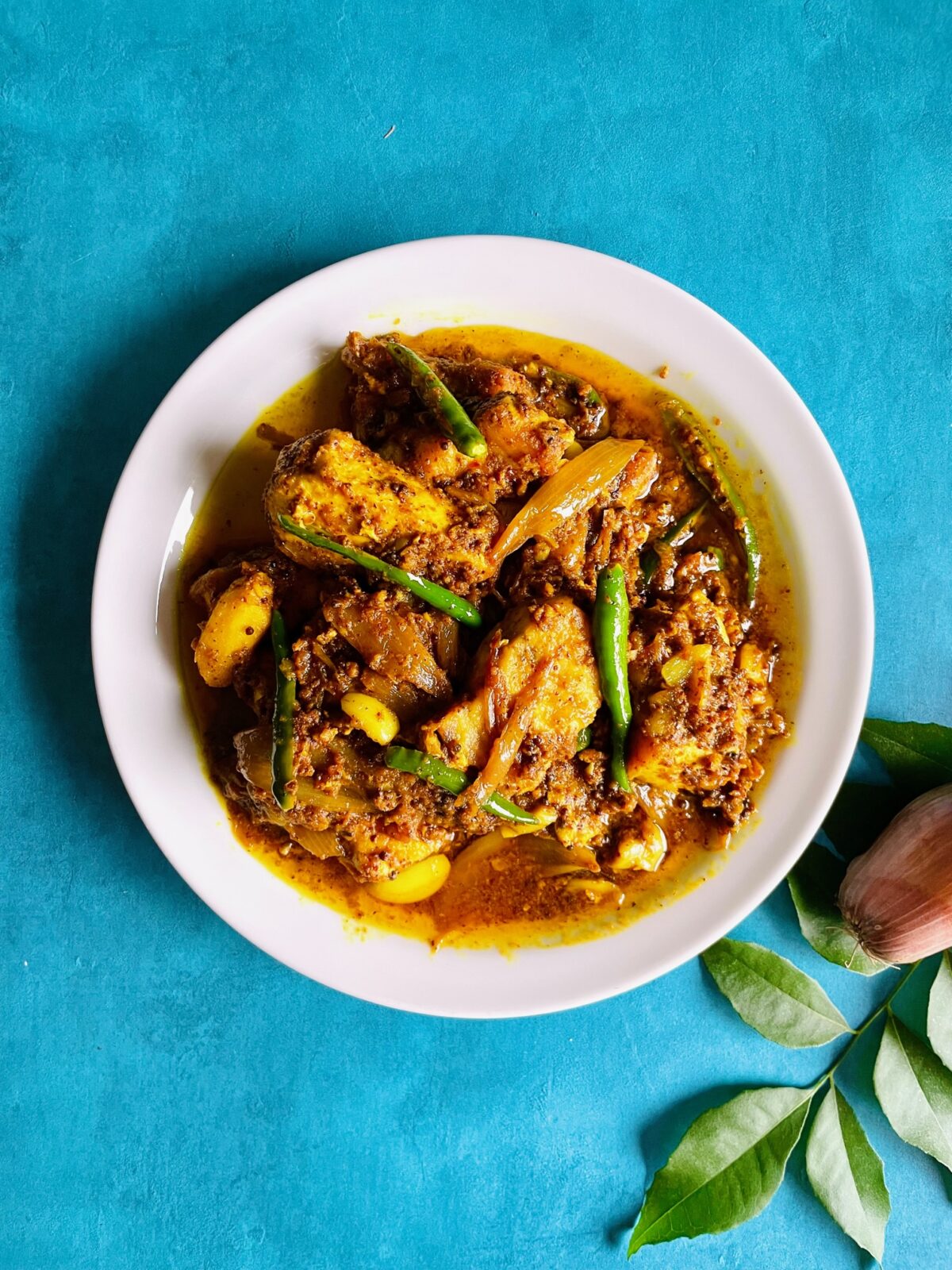
The Best Mauritian Fish Vindaye (Step-by-Step)
Ingredients
- ½ cup vegetable oil I used avocado oil
- 2 tablespoons mustard oil optional but highly recommended, vegetable oil is a good substitute
- 1 pound swordfish cut in two-bite pieces, 500 g
- 1 tablespoon corn starch or tapioca starch
- 2 medium shallots roughly chopped, 1 cup, 60 g, 2.1 oz
- 5 cloves garlic sliced lengthwise
- 2 slices ginger or to taste
- 1 tablespoon mustard seeds brown or black
- 3 tablespoons achard masala paste
- 3 tablespoons white vinegar or to taste
- 4 green chili peppers cut lengthwise, Indian green chili peppers or Thai green chili peppers
- 2 teaspoons salt or to taste
Instructions
- Prepare fish. Before getting anything started, make sure to soak up the excess moisture from the fish fillets. Put the fish on several layers of paper towels on a plate. Sprinkle with some salt and set aside while you prepare the rest of your ingredients. Excess moisture can cause the hot oil to splash when you add the fish. Reducing the moisture in the fish as much as possible helps with the excess splashing. Your fish will also not sear if too much liquid is released into the oil.
- Heat vegetable oil. Pour oil in a large pan, preferably cast iron, on medium-high heat.
- Cook the fish. Once your oil is hot and ready, sprinkle the fish fillets with the corn starch and add to the pan. Cook for about 3 minutes until slightly seared. Flip the fish over and cook until the fillets are about half-cooked, about 2 more minutes. No need to sear this side of the fish. I recommended cooking the fish to the half way point because you will add the fish in the pan again later and it will continue cooking then. Set half-cooked fish aside. Leave the used oil in the pan.
- Cook the shallot, garlic and ginger. Add the mustard oil to the used oil in the pan and heat on medium-high. Once the oil is hot, add shallot and cook until slightly translucent, about 2 minutes. Add the garlic and ginger, and cook briefly while stirring a couple of times, about 1 minute.
- Cook the spices. Add the mustard seeds and cook until some of them start popping, about 2 minutes. Make sure your oil is not smoking as you will burn the spices and cause them to turn bitter. Add the achard masala paste to the pan, cook for another 3 minutes. Make sure to stir everything well. If the oil is smoking a bit, add 1 tablespoon of water to bring down the heat.
- Add the rest of the ingredients. Once you mix all the pan ingredients really well, add the white vinegar and salt. Give it a quick stir to mix it well with the spices then add the fish and green chili peppers. Gently mix everything. Taste and adjust the salt and vinegar if needed.
- Serve. Enjoy this delicious Mauritian fish vindaye with a fresh baguette or even some rice. To store, simply let it come to room temperature and transfer into a container. This dish keeps well in the fridge for several days and the flavor will develop over time. You can top it with some mustard oil if you would like it to last for a few weeks.
Notes
Sharing is caring
If you like enjoyed this list, please share it with your family and friends. I am also on Facebook, please follow my recipe updates there.
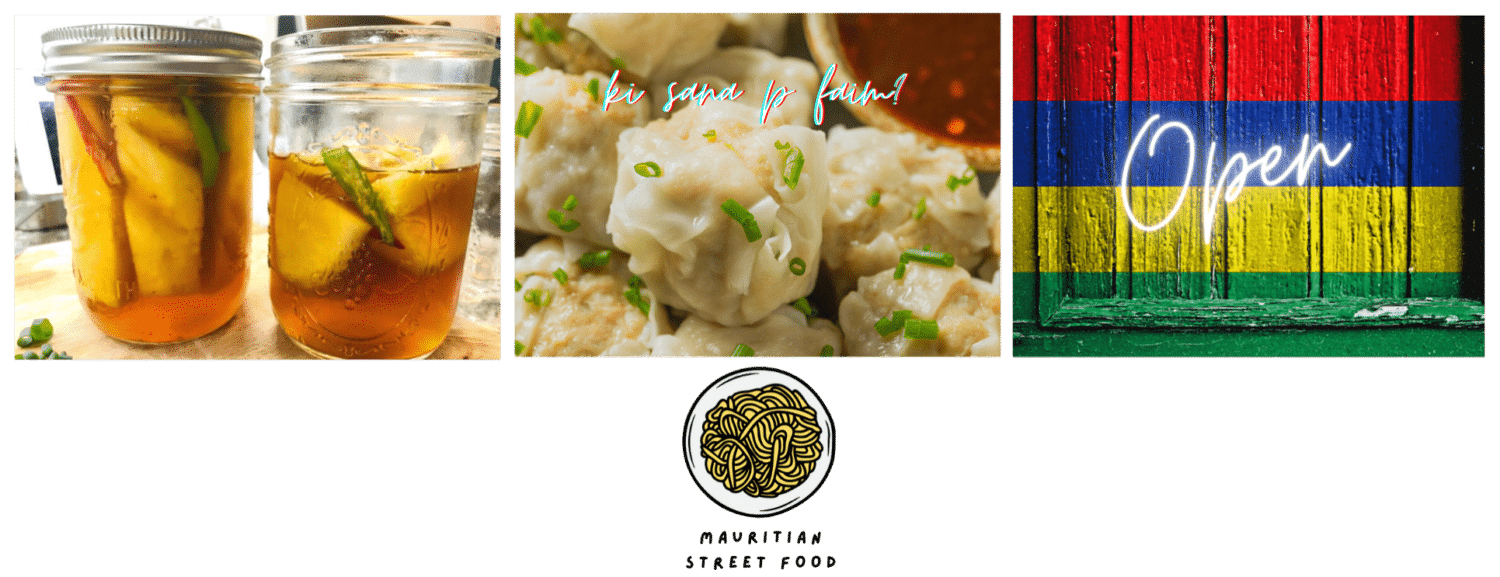

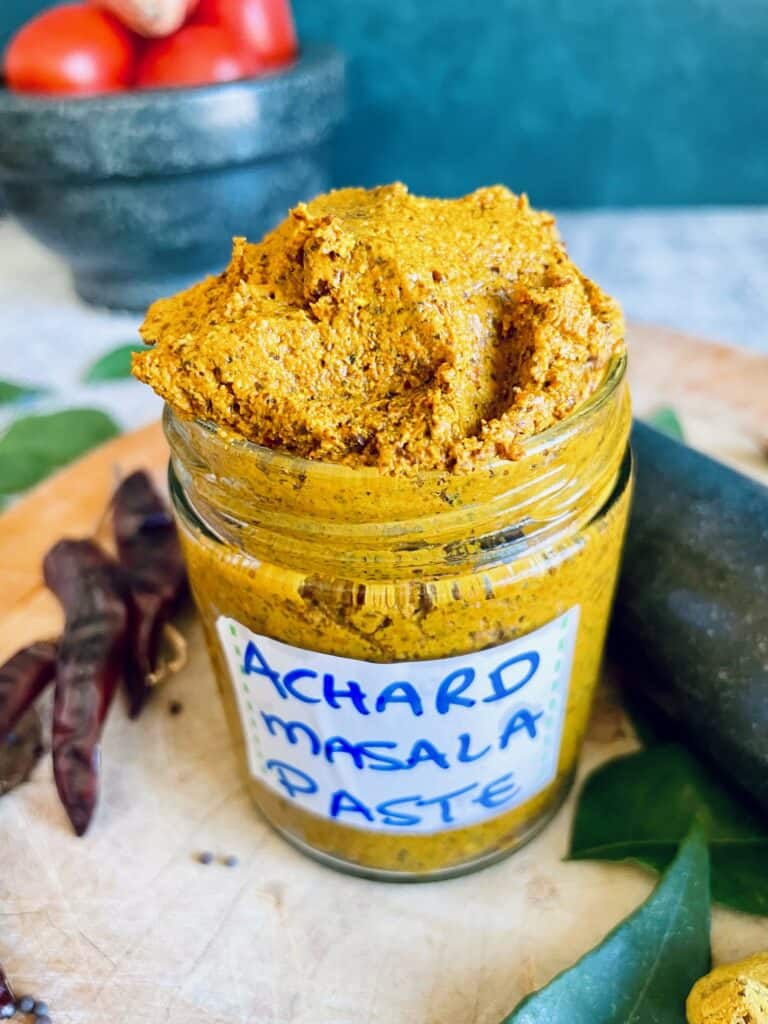
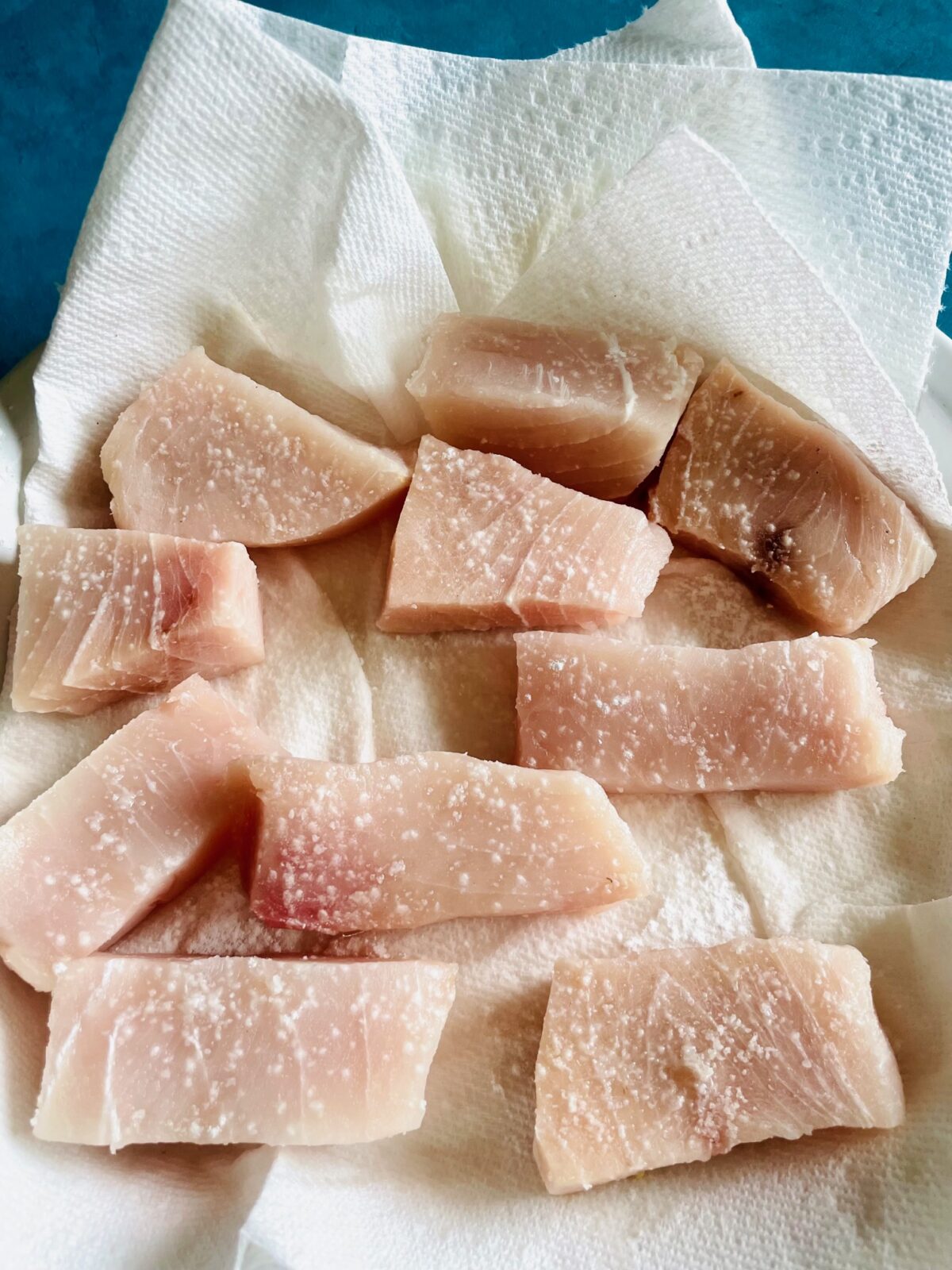
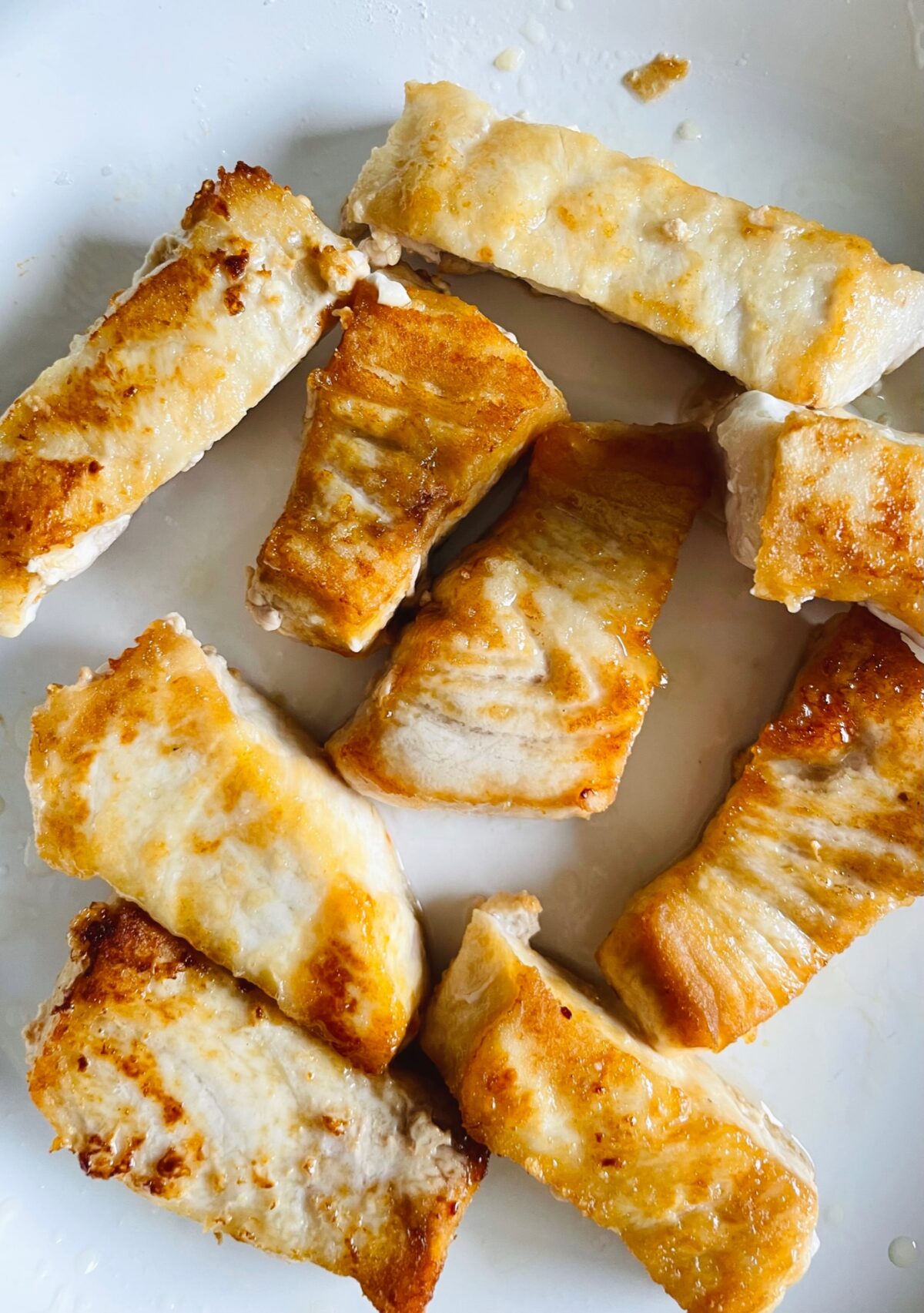
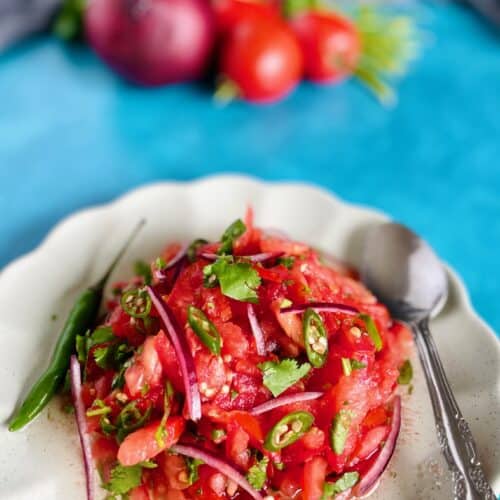


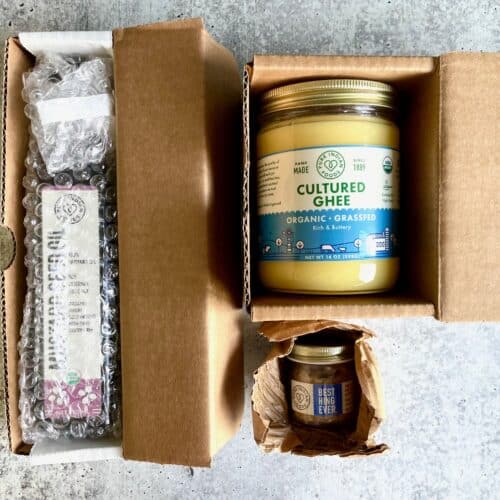
Leave a Reply